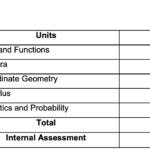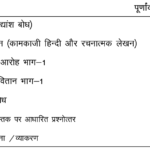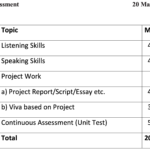Uttarakhand Board of School Education (UBSE) has released the detailed syllabus for the Class 11th (eleventh) Chemistry course for the academic year 2024-2025. The syllabus is designed to provide students with a comprehensive understanding of fundamental chemical concepts, preparing them for both higher education and various competitive exams.
Check UK board class 11 chemistry syllabus along with detailed 11th chemistry board examination pattern with list of practicals and activities.
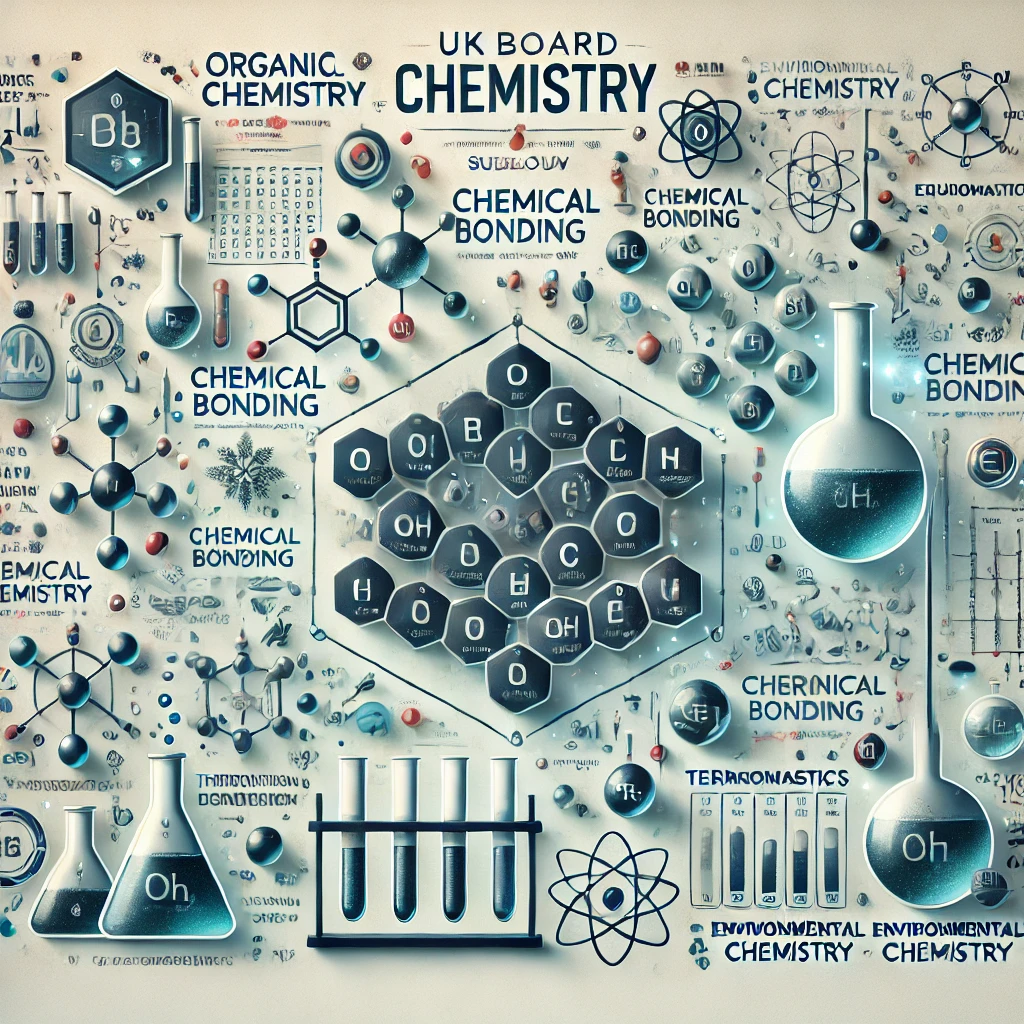
Contents
Uttarakhand Board 11th Chemistry Syllabus 2024-2025

Unit 1 : Some Basic Concepts of Chemistry
- General Introduction: Importance and scope of Chemistry, Nature of matter, laws of chemical combination, Dalton’s atomic theory: concept of elements, atoms and molecules.
- Atomic and molecular masses, mole concept and molar mass, percentage composition, empirical and molecular formula, chemical reactions, stoichiometry and calculations based on stoichiometry.
Unit 2 : Structure of Atom
Discovery of Electron, Proton and Neutron, atomic number, isotopes and isobars. Thomson’s model and its limitations. Rutherford’s model and its limitations, Bohr’s model and its limitations, concept of shells and subshells, dual nature of matter and light, de Broglie’s relationship, Heisenberg uncertainty principle, concept of orbitals, quantum numbers, shapes of s, p and d orbitals, rules for filling electrons in orbitals – Aufbau principle, Pauli’s exclusion principle and Hund’s rule, electronic configuration of atoms, stability of half-filled and completely filled orbitals.
Unit 3: Classification of Elements and Periodicity in Properties
Significance of classification, brief history of the development of periodic table, modern periodic law and the present form of periodic table, periodic trends in properties of elements -atomic radii, ionic radii, inert gas radii, Ionization enthalpy, electron gain enthalpy, electronegativity, valency. Nomenclature of elements with atomic number greater than 100.
Unit 4: Chemical Bonding and Molecular Structure
Valence electrons, ionic bond, covalent bond, bond parameters, Lewis structure, polar character of covalent bond, covalent character of ionic bond, valence bond theory, resonance, geometry of covalent molecules, VSEPR theory, concept of hybridisation, involving s, p and d orbitals and shapes of some simple molecules, molecular orbital theory of homonuclear diatomic molecules (qualitative idea only), Hydrogen bond.
Unit 5: Chemical Thermodynamics
- Concepts of System and types of systems, surroundings, work, heat, energy, extensive and intensive properties, state functions.
- First law of thermodynamics -internal energy and enthalpy, heat capacity and specific heat, measurement of U and H, Hess’s law of constant heat summation, enthalpy of bond dissociation, combustion, formation, atomization, sublimation, phase transition, ionization, solution and dilution.
- Second law of Thermodynamics (brief introduction)
- Introduction of entropy as a state function, Gibb’s energy change for spontaneous and non-spontaneous processes, criteria for equilibrium.
- Third law of thermodynamics (brief introduction).
Unit 6: Equilibrium
Equilibrium in physical and chemical processes, dynamic nature of equilibrium, law of mass action, equilibrium constant, factors affecting equilibrium – Le Chatelier’s principle, ionic equilibrium- ionisation of acids and bases, strong and weak electrolytes, degree of ionisation, ionisation of poly basic acids, acid strength, concept of pH, hydrolysis of salts (elementary idea), buffer solution, Henderson Equation, solubility product, common ion effect (with illustrative examples).
Unit 7: Redox Reactions
Concept of oxidation and reduction, redox reactions, oxidation number, balancing redox reactions, in terms of loss and gain of electrons and change in oxidation number, applications of redox reactions.
Unit 8: Organic Chemistry -Some Basic Principles and Techniques
General introduction, methods of purification, qualitative and quantitative analysis, classification and IUPAC nomenclature of organic compounds. Electronic displacements in a covalent bond: inductive effect, electromeric effect, resonance and hyper conjugation. Homolytic and heterolytic fission of a covalent bond: free radicals, carbocations, carbanions, electrophiles and nucleophiles, types of organic reactions.
Unit 9: Hydrocarbons
Classification of Hydrocarbons Aliphatic Hydrocarbons:
- Alkanes – Nomenclature, isomerism, conformation (ethane only), physical properties, chemical reactions including free radical mechanism of halogenation, combustion and pyrolysis.
- Alkenes – Nomenclature, structure of double bond (ethene), geometrical isomerism, physical properties, methods of preparation, chemical reactions: addition of hydrogen, halogen, water, hydrogen halides (Markovnikov’s addition and peroxide effect), ozonolysis, oxidation, mechanism of electrophilic addition.
- Alkynes – Nomenclature, structure of triple bond (ethyne), physical properties, methods of preparation, chemical reactions: acidic character of alkynes, addition reaction of – hydrogen, halogens, hydrogen halides and water.
- Aromatic Hydrocarbons: Introduction, IUPAC nomenclature, benzene: resonance, aromaticity, chemical properties: mechanism of electrophilic substitution. Nitration, sulphonation, halogenation, Friedel Craft’s alkylation and acylation, directive influence of functional group in monosubstituted benzene. Carcinogenicity and toxicity.
UK Board Class 11th Chemistry Practical Syllabus
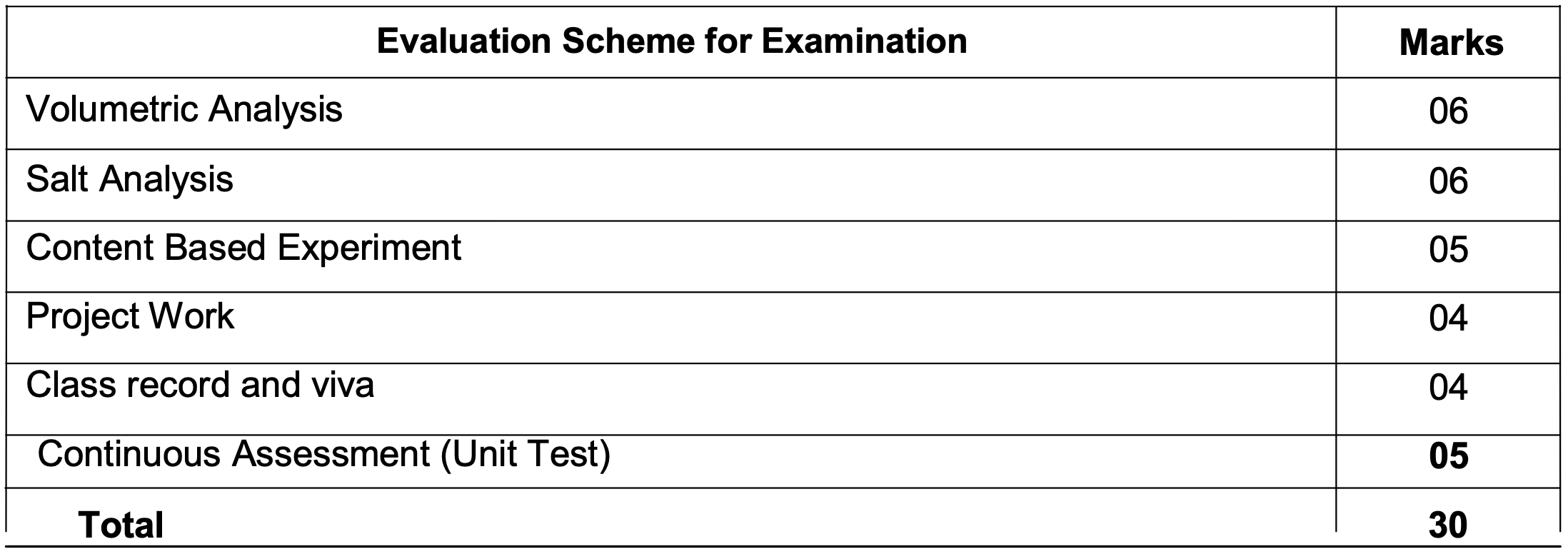
Micro-chemical methods are available for several of the practical experiments, wherever possible such techniques should be used.
Basic Laboratory Techniques
- Cutting glass tube and glass rod
- Bending a glass tube
- Drawing out a glass jet
- Boring a cork
Characterisation and Purification of Chemical Substances
- Determination of melting point of an organic compound.
- Determination of boiling point of an organic compound.
- Crystallisation of impure sample of any one of the following: Alum, Copper Sulphate, Benzoic Acid.
Experiments based on pH (Any one of the following experiments)
- Determination of pH of some solutions obtained from fruit juices, solution of known and varied concentrations of acids, bases and salts using pH paper or universal indicator.
- Comparing the pH of solutions of strong and weak acids of same concentration. Study the pH change in the titration of a strong base using universal
indicator. - Study the pH change by common-ion in case of weak acids and weak bases.
Chemical equilibrium (One of the following experiments)
- Study the shift in equilibrium between ferric ions and thiocyanate ions by increasing/decreasing the concentration of either of the ions.
- Study the shift in equilibrium between [Co(H2O)6]2+ and chloride ions by changing the concentration of either of the ions.
Quantitative Estimation
- Using a mechanical balance/electronic balance.
- Determination of strength of a given solution of Sodium hydroxide by titrating it against standard solution of Oxalic acid.
- Preparation of standard solution of Sodium carbonate.
- Determination of strength of a given solution of hydrochloric acid by titrating it against standard Sodium Carbonate solution.
Qualitative Analysis
- Determination of one anion and one cation in a given salt Cations- Pb2+, Cu2+, As3+, Al3+, Fe3+, Mn2+, Ni2+, Zn2+, Co2+, Ca2+, Sr2+, Ba2+, Mg2+, NH4+
- Anions – CO32– , S2-, NO2- , SO32–, SO42-, NO3- , Cl- , Br-, I-, PO43- , , CH3COO- (Note: Insoluble salts excluded)
- Detection of -Nitrogen, Sulphur, Chlorine in organic compounds.
PROJECTS
Scientific investigations involving laboratory testing and collecting information from other sources. A few suggested Projects:-
- Checking the bacterial contamination in drinking water by testing sulphide ion.
- Study of the methods of purification of water.
- Testing the hardness, presence of Iron, Fluoride, Chloride, etc., depending upon the regional variation in drinking water and study of causes of presence of these ions above permissible limit (if any).
- Investigation of the foaming capacity of different washing soaps and the effect of addition of Sodium carbonate on it
- Study the acidity of different samples of tea leaves.
- Determination of the rate of evaporation of different liquids Study the effect of acids and bases on the tensile strength of fibres.
- Study of acidity of fruit and vegetable juices.
UK Board Class 11 Chemistry Exam Structure & Pattern
The Chemistry exam will consist of a theoretical paper worth 70 marks, complemented by a practical examination worth 30 marks. The theory paper will include a mix of objective, short answer, and long answer questions, covering all units in the syllabus.
This well-rounded syllabus ensures that students gain both theoretical knowledge and practical skills in Chemistry, laying a strong foundation for their future academic and professional pursuits. Students are encouraged to focus on understanding concepts and practicing problems to excel in their exams.
More Links For Uttarakhand UBSE Class 11th Syllabus 2024-25
| Subject Name (11th) | Subject Code | Syllabus Link |
| 11th Maths | 128 | CLICK HERE |
| 11th Physics | 129 | CLICK HERE |
| 11th Chemistry | 130 | CLICK HERE |
| 11th Biology | 131 | CLICK HERE |
| 11th Hindi | 101 | CLICK HERE |
| 11th English | 103 | CLICK HERE |
| Latest UBSE Updates | UBSE | CLICK HERE |
| UK Board Class 12th All Subjects Syllabus |
All Subjects | CLICK HERE |
| Official Website | UK Board | CLICK HERE |
Important FAQS
How much weightage is given to practicals in the Class 11 Chemistry syllabus?
Practicals are a crucial component of the Chemistry syllabus, generally carrying around 30 marks. Experiments related to chemical reactions, titration, and testing physical properties of compounds are emphasized in the practical exams.
What is the distribution of marks in the UK Board Class 11 Chemistry exam?
The exam typically consists of two parts:
- Theory paper (70 marks)
- Practical exam (30 marks). The theory paper is divided into sections like objective-type questions, short answers, and long-answer questions.
Where can students find the official UK Board Class 11 Chemistry syllabus for 2024-2025?
Students can access the official syllabus on the UBSE website, alternatively direct links are given here, or they can check their school or study guide for the most recent version of the syllabus. Teachers also provide copies of the syllabus in the classroom.

![UK Board Class 11th Biology Syllabus 2024-2025 [XI UBSE Uttarakhand] feature image](https://4syllabus.in/wp-content/uploads/2024/09/UK-Board-Class-11th-Biology-Syllabus-2024-2025-XI-UBSE-Uttarakhand-feature-image-150x150.webp)
